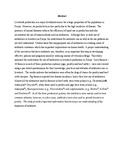A pilot survey of farmers’ motivations of antibiotics use in livestock production in Kenya

View/
Date
2011Author
Irungu, P.
Kariuki, S.
Winters, C.J.
Type
ArticleLanguage
enMetadata
Show full item recordAbstract
Livestock production is a major livelihood source for a large proportion of the population in Kenya. However, its productivity is low partly due to the high incidence of disease. The presence of animal diseases reduces the efficiency of input use in production and also necessitates the use of antimicrobials such as antibiotics. Although there is wide use of antibiotics in livestock in Kenya, the motivations for antibiotic use as well as the use patterns are not well understood. Studies show that inappropriate use of antibiotics is a leading cause of antibiotic resistance which has important implications on human health. A proper understanding of the incentives that drive antibiotic use, therefore, is an important first step in developing effective policies and programs aimed at reducing misuse of veterinary drugs. This study analyzed the motivations for use of antibiotics in livestock production in Kenya. Sixty farmers – 20 farmers in each of three production systems (pigs, poultry and beef cattle) – were interviewed using a pre-tested questionnaire for their knowledge, practices and attitudes of antibiotics use in livestock. The results indicate that antibiotics were often the drug of choice for poultry and beef cattle keepers. Pig farmers reported low disease incidence, hence their low use of antibiotics. Almost all the antibiotics used by farmers in beef cattle were tetracyclines (e.g., Oxytetraclin®, Adamycin®, Oxy-met®), while those used in poultry and pigs were tetracyclines (e.g., Alamycin®), fluoroquinolones (e.g., Furazolodine®) and sulphonamides (e.g., Biotrin®, S-Dime® and Poultricin®). In all the three production systems, the antibiotics were mainly used to treat common ailments; however, in a few cases, antibiotics were also used as growth boosters in poultry. The study provides important information that increases our understanding of the dynamics of antibiotic.
